
The Ultimate Guide to Drip Campaigns + 7 Tools and Examples

by
Wiktoria Slowikowska
Oct 9, 2024
Identify and convert your most valuable users
Sign Up
Effective communication with users is key to success. One of the most powerful tools in a SaaS company's arsenal is the drip email campaign.
But what exactly are drip emails, and how can they supercharge your SaaS business? Let's dive in and explore this crucial aspect of SaaS marketing and user engagement.
What are Drip Emails?
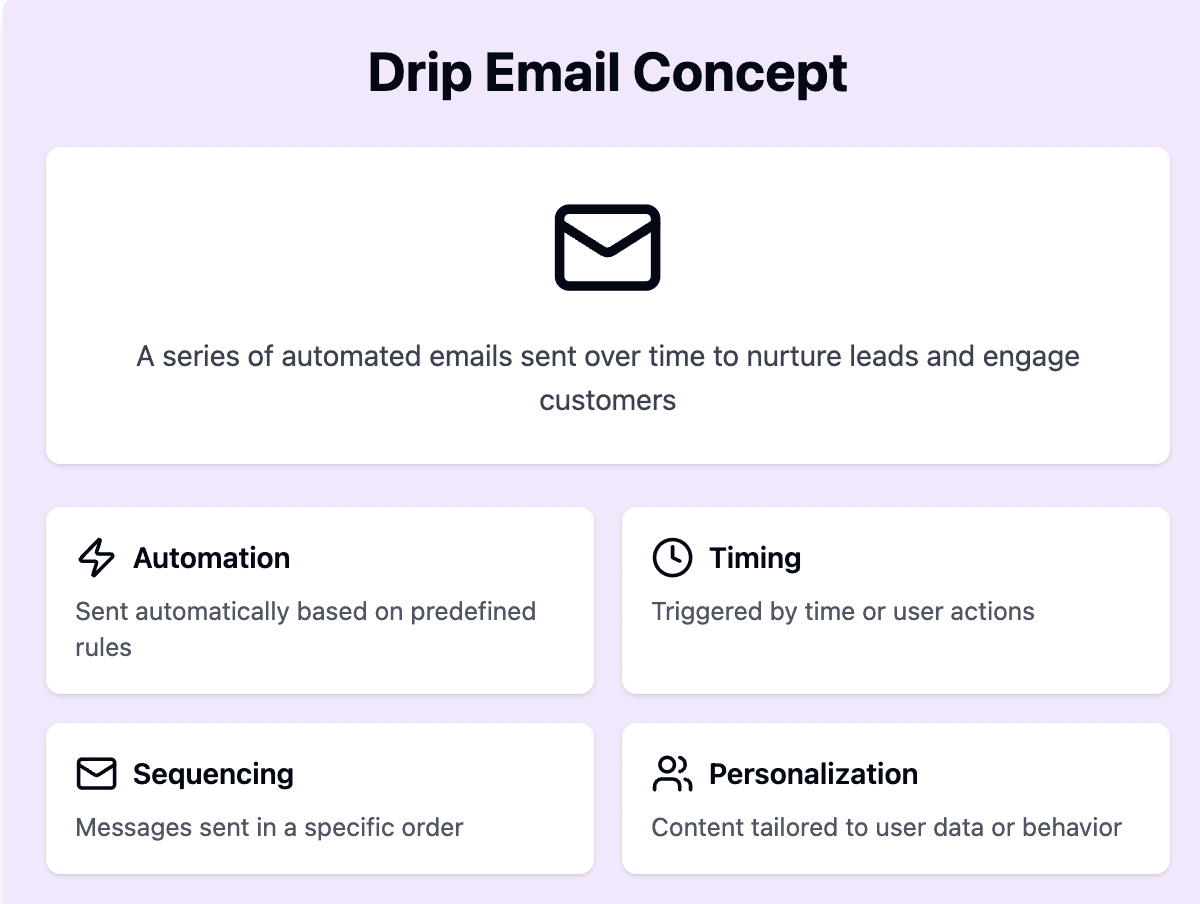
Drip emails are a series of pre-written, automated messages sent out on a schedule or triggered by specific user actions. Unlike one-off email blasts, drip campaigns are strategically designed to nurture leads, onboard new users, or engage existing customers over time.
Key characteristics of drip emails include:
Automation: Sent automatically based on predefined rules
Sequencing: Messages are typically sent in a specific order
Timing: Can be triggered by time passing or by user actions
Personalization: Content is often tailored based on user data or behavior
The Power of Drip Campaigns in SaaS
Drip campaigns are particularly effective in SaaS for several reasons:
Gradual onboarding: They allow you to introduce features over time, preventing user overwhelm.
Increased engagement: Regular touchpoints keep your product top-of-mind for users.
Reduced churn: By providing timely value and support, you can keep users active and reduce churn.
Scalable communication: Automate personalized communication with thousands of users simultaneously.
According to a study by Annex Cloud, drip emails can generate 80% more sales at 33% lower costs. Additionally, Forrester Research found that lead nurturing emails get 4-10 times the response rate compared to standalone email blasts.
Types of Drip Campaigns for SaaS

Now, let's explore the various types of drip campaigns commonly used in SaaS, along with their typical timeframes and goals.
Let's dive deeper into each of these campaign types.
Deep Dive into Drip Campaign Types
1. Welcome Series
The welcome series is your chance to make a great first impression. These emails should:
Thank the user for signing up
Set clear expectations about what they'll receive
Provide quick wins to showcase product value
2. Onboarding Drip Campaign
Onboarding emails guide new users through your product's setup and key features. Best practices include:
Breaking down the setup process into manageable steps
Using visual aids like GIFs or short videos to demonstrate features
Celebrating user milestones to encourage continued engagement
3. Feature Education Emails
These emails highlight specific features over time, helping users get more value from your product. Tips for effective feature education:
Focus on benefits, not just functionality
Use customer stories or use cases to illustrate feature value
Include clear calls-to-action (CTAs) to encourage feature adoption
4. Re-engagement Campaigns
Re-engagement campaigns aim to bring inactive users back to your product. Strategies include:
Highlighting new features or improvements since their last login
Offering a special promotion or extended trial
Asking for feedback to understand why they've disengaged
5. Upgrade Prompts
These emails encourage free users to switch to paid plans. Key considerations:
Timing is crucial – wait until the user has experienced value from the free version
Clearly articulate the additional benefits of paid plans
Consider offering a limited-time discount to create urgency
We'll now move on to exploring best practices for creating effective SaaS drip campaigns.
Best Practices for SaaS Drip Campaigns
Personalization: Use user data to tailor content, such as addressing users by name or referencing their specific usage patterns.
Segmentation: Divide your user base into groups based on behavior, preferences, or demographics to send more relevant emails.
Clear CTAs: Each email should have a clear, single call-to-action to guide users towards the desired action.
Mobile Optimization: Ensure your emails look great and function well on mobile devices.
A/B Testing: Regularly test different elements of your emails (subject lines, content, CTAs) to optimize performance.
Timing and Frequency: Find the right balance of email frequency to keep users engaged without overwhelming them.
Software Tools for SaaS Drip Campaigns
Choosing the right software is crucial for the success of your drip email campaigns. Let's dive deep into six popular options: Brevo, Drip, Customer.io, ActiveCampaign, Mailchimp, and HubSpot. We'll explore their features, pricing, and suitability for different types of SaaS businesses.
Brevo (formerly Sendinblue)
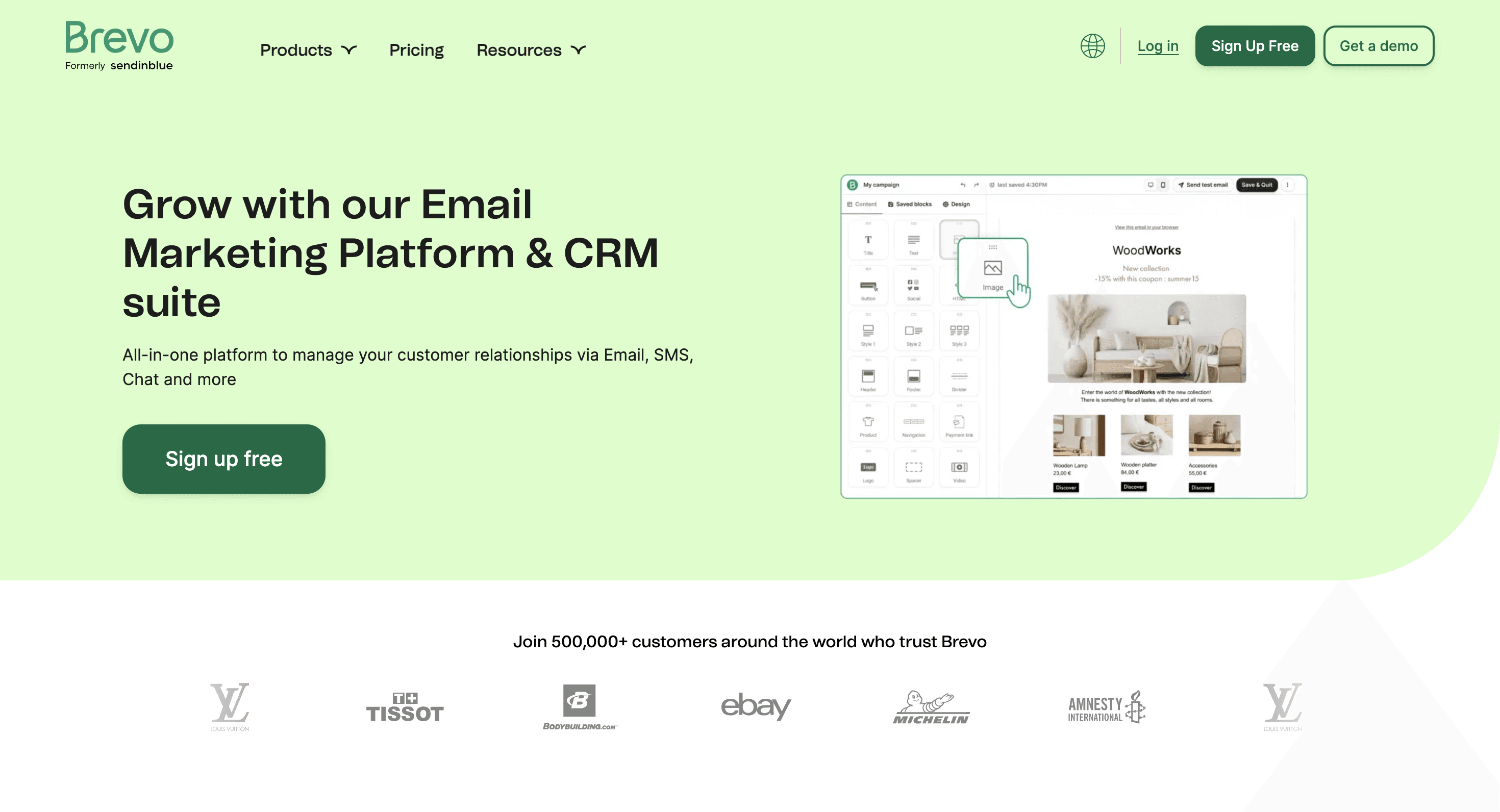
Overview: Brevo is an all-in-one digital marketing platform that offers email marketing, SMS marketing, chat, and CRM tools.
Key Features:
Drag-and-drop email designer
Advanced segmentation and personalization
Marketing automation workflows
Transactional email capabilities
SMS marketing
Live chat functionality
Basic CRM features
Pricing:
Free plan: Up to 300 emails per day
Lite plan: Starts at $25/month for 20,000 emails
Premium plan: Starts at $65/month with advanced features
Pros:
Affordable with a generous free plan
Strong automation and segmentation features
Includes SMS marketing and live chat
Good deliverability rates
Cons:
User interface can be less intuitive for beginners
Limited template designs compared to some competitors
Reporting features are somewhat basic
Best for: Small to medium-sized SaaS businesses looking for an all-in-one marketing solution on a budget. Particularly good for those who want to combine email with SMS marketing.

Overview: Drip is an e-commerce focused email marketing and automation platform that's also well-suited for SaaS companies.
Key Features:
Visual automation builder
Advanced segmentation based on user behavior
Pre-built playbooks for common scenarios
Multi-channel marketing (email, SMS, social)
Deep e-commerce integrations
Revenue attribution
Pricing:
Starts at $39/month for up to 2,500 contacts
Scales based on the number of contacts
Pros:
Specifically designed for e-commerce, which can be beneficial for SaaS with a strong e-commerce component
Advanced segmentation and personalization capabilities
Strong integration with major e-commerce platforms
Powerful behavior-based automation
Cons:
Can be pricey for larger email lists
Steeper learning curve for non-technical users
Some users report occasional platform slowdowns
Best for: E-commerce-focused SaaS businesses or those with complex, behavior-based segmentation needs. Also great for SaaS companies transitioning from simpler email tools and needing more advanced features.

Overview: Customer.io is a highly flexible, event-based customer messaging platform designed for tech-savvy teams.
Key Features:
Behavioral-based segmentation and targeting
Multi-channel messaging (email, push, SMS, webhooks)
Visual workflow builder
A/B testing
Robust API for custom integrations
Liquid templating language for advanced personalization
Pricing:
Basic plan: Starts at $150/month for up to 12,000 profiles
Premium plan: Custom pricing with advanced features
Pros:
Highly flexible and customizable
Excellent event tracking and behavioral targeting
API-first approach for technical teams
Strong data privacy and security features
Cons:
Can be complex for non-technical users
Limited pre-built templates
Higher starting price point compared to some competitors
Best for: Tech-savvy SaaS companies that need granular control over their email automation and have the technical resources to fully leverage the platform's capabilities. Ideal for businesses with complex user journeys or those requiring deep integration with their product.
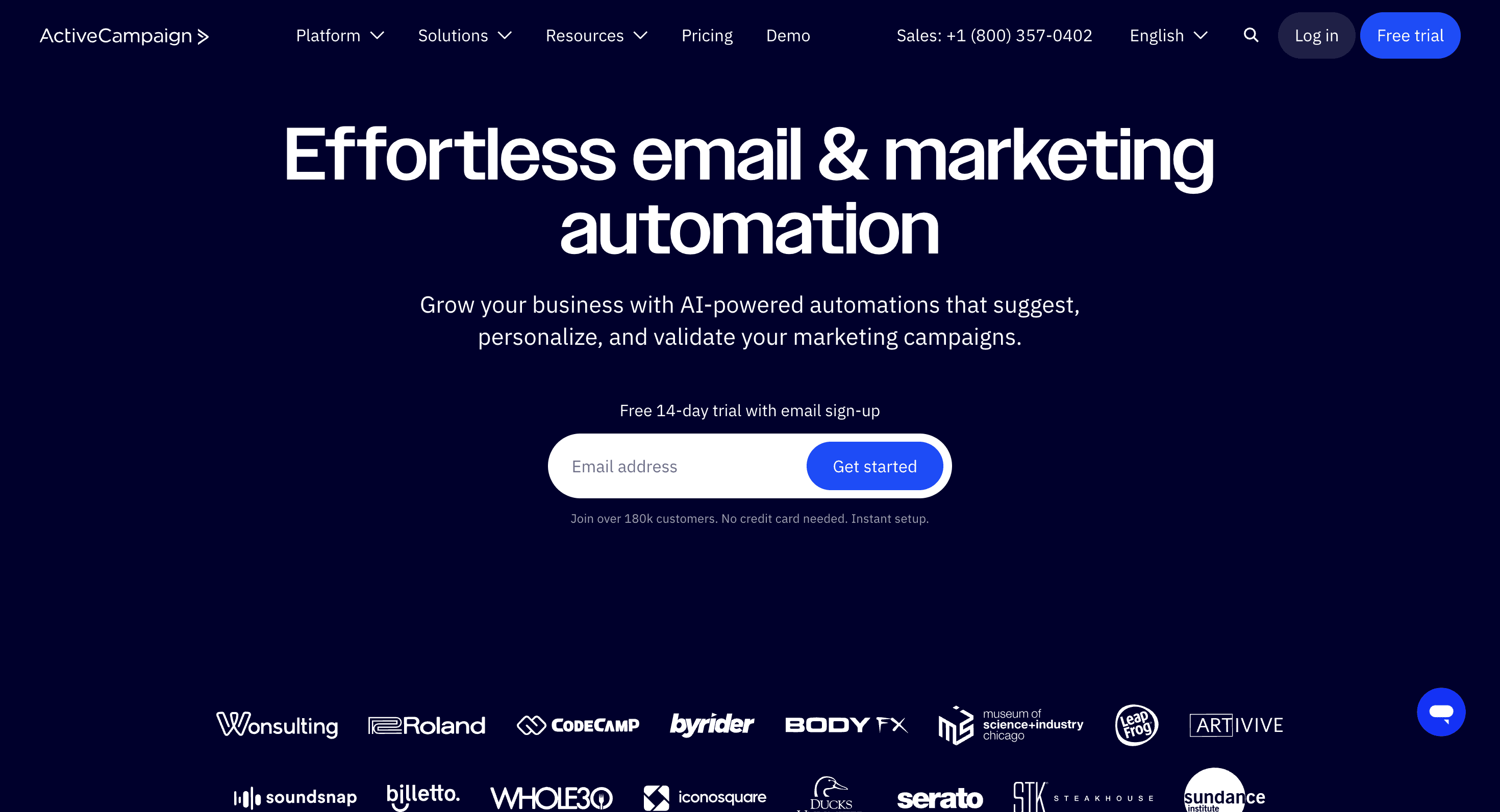
Overview: ActiveCampaign is a comprehensive customer experience automation platform that combines email marketing, marketing automation, sales automation, and CRM.
Key Features:
Visual automation builder
CRM with sales automation
Machine learning-powered predictive sending
Site tracking and event tracking
Conditional content in emails
Robust segmentation capabilities
Multi-channel marketing (email, SMS, site messages)
Pricing:
Lite plan: Starts at $29/month for up to 1,000 contacts
Plus plan: Starts at $49/month with additional features
Professional and Enterprise plans available for larger businesses
Pros:
Powerful automation and workflow builder
CRM functionality included, great for aligning marketing and sales
Machine learning capabilities for predictive sending and content
Extensive integration options
Cons:
Can become expensive as your list grows
Some users find the interface overwhelming due to the vast feature set
Lower-tier plans miss out on some advanced features
Best for: Growing SaaS businesses that need advanced marketing automation and CRM features. Particularly suitable for companies looking to closely align their marketing and sales efforts.
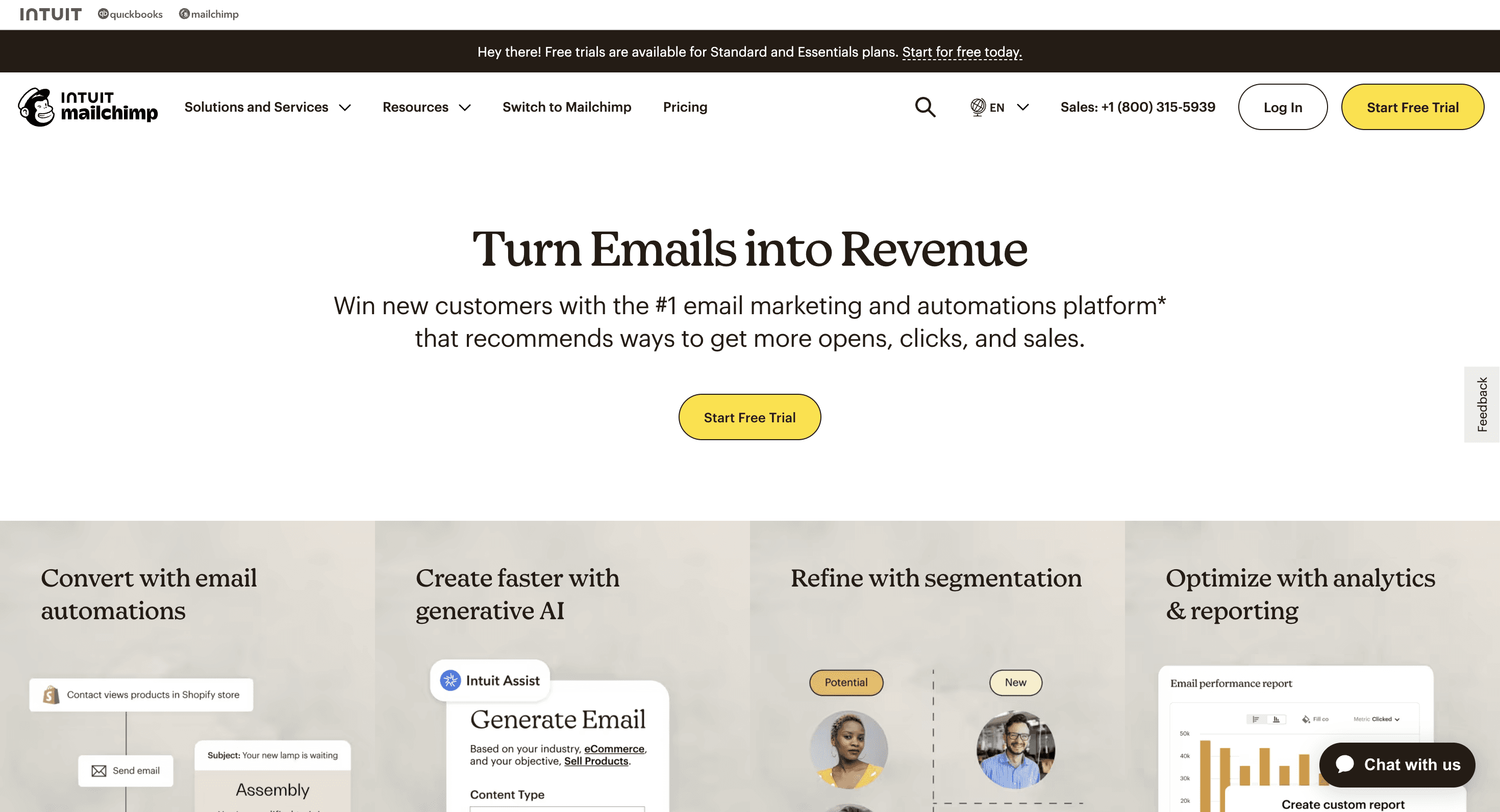
Overview: Mailchimp is one of the most well-known email marketing platforms, offering a range of digital marketing tools beyond just email.
Key Features:
Intuitive email designer
Basic automation workflows
Audience segmentation
A/B testing
Landing page builder
Social media ad campaigns
Basic website builder
Pricing:
Free plan: Up to 2,000 contacts and 10,000 sends per month
Essentials plan: Starts at $11/month for more features
Standard plan: Starts at $17/month with advanced features
Premium plan: Starts at $299/month for high-volume senders
Pros:
User-friendly interface, great for beginners
Generous free plan
Wide range of integrations
All-in-one marketing platform with features beyond email
Cons:
Advanced automations only available on higher-tier plans
Can become expensive for larger lists
Segmentation features are less advanced compared to some competitors
Best for: Small startups or SaaS companies just beginning with email marketing. Its ease of use and free plan make it a good starting point, but growing companies might outgrow its capabilities.
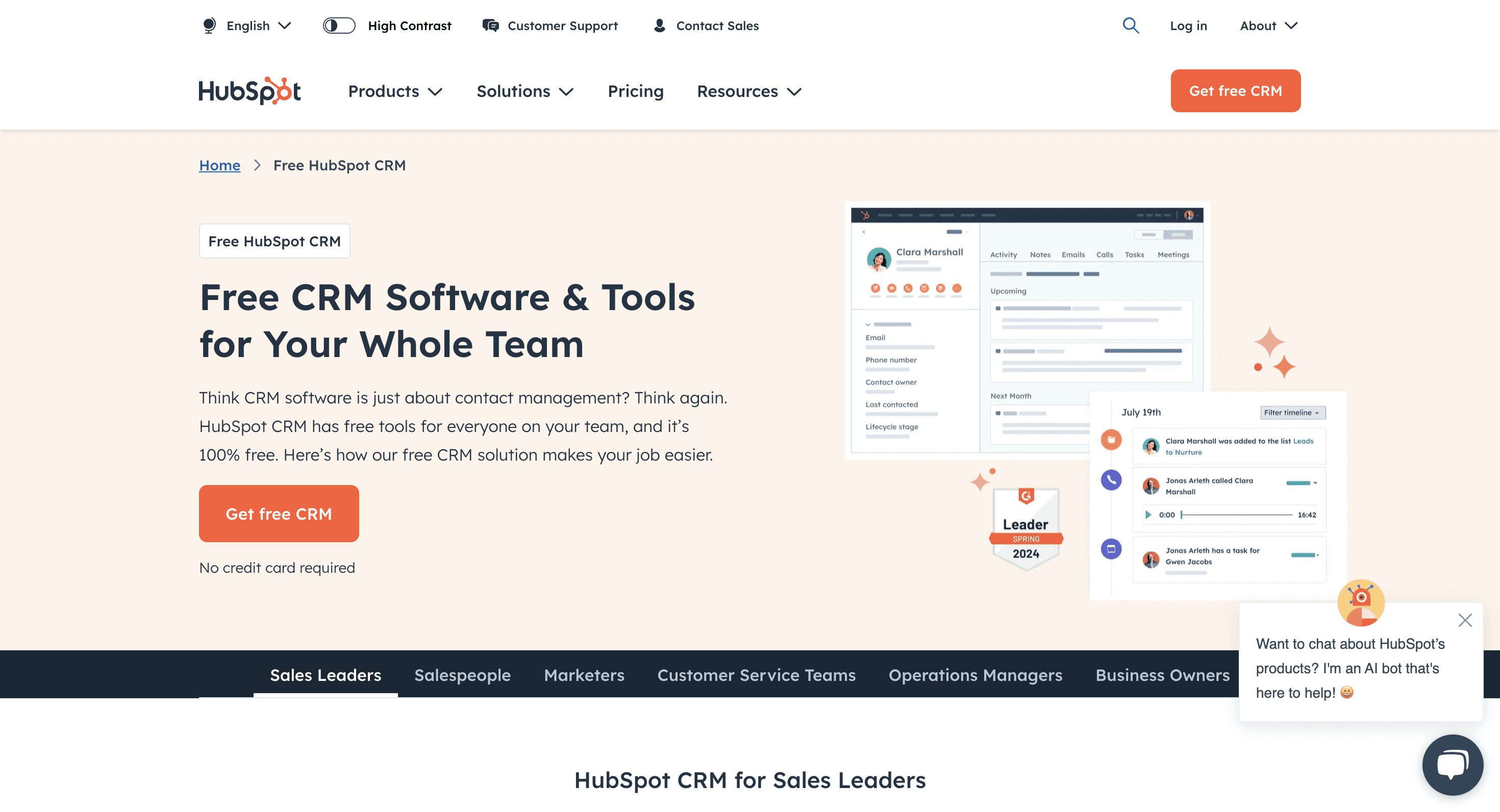
Overview: HubSpot is a comprehensive inbound marketing, sales, and customer service platform with robust email marketing and automation capabilities.
Key Features:
Visual workflow builder for complex automations
Drag-and-drop email editor
Advanced personalization and segmentation
A/B testing
Comprehensive CRM
Landing page builder
SEO tools
Social media management
Ad management
Pricing:
Free tools available
Marketing Hub Starter: $45/month (lacks some advanced automation features)
Marketing Hub Professional: Starts at $800/month for full marketing automation
Enterprise plan available for larger organizations
Pros:
All-in-one marketing, sales, and service platform
Powerful CRM with deep integration into email tools
Excellent customer support and educational resources
Comprehensive reporting and analytics
Cons:
Can be expensive, especially for advanced features
Might be overkill for companies only needing email marketing
Steeper learning curve due to the vast array of features
Best for: Larger SaaS companies looking for a comprehensive marketing and sales solution. Ideal for businesses that want to unify their marketing, sales, and customer service efforts on a single platform.
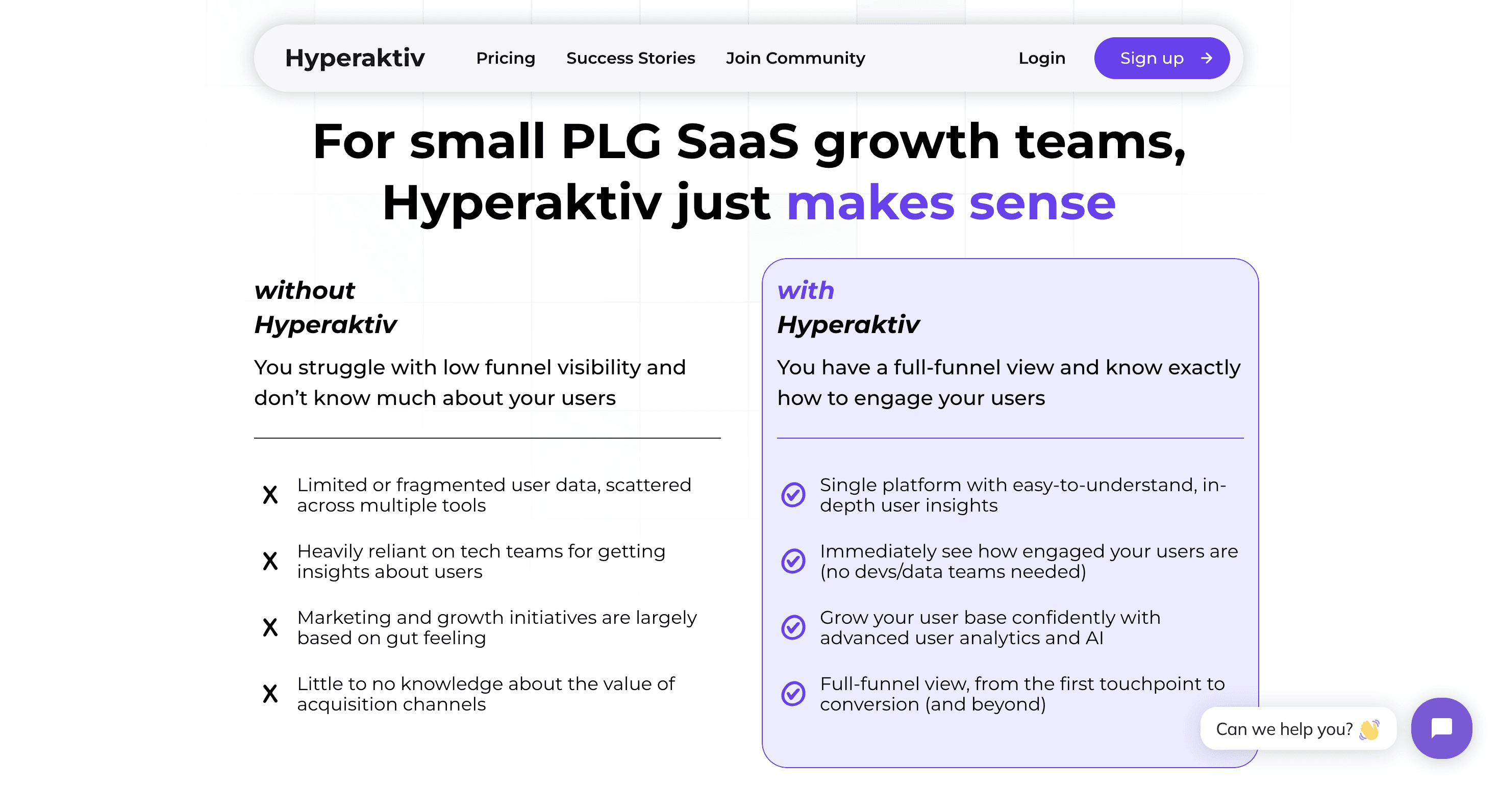
Overview: Hyperaktiv is a specialized tool for SaaS companies, focusing on hyperpersonalization and drip campaigns. It integrates with existing email marketing platforms to enhance personalization capabilities.
Key Features:
Hyperpersonalization engine
Multi-language support
User characteristic-based messaging
Adaptive tone of voice
Integration with various email marketing tools
Comprehensive user journey tracking
Automated segmentation and user profiling
Pricing:
Free Tier: €0/month for up to 1,000 monthly active users
Starter Tier: Starts at €49/month for up to 5,000 monthly active users
Pros:
Advanced hyperpersonalization capabilities for highly targeted messaging
User-friendly interface with rapid implementation and quick time-to-value
Comprehensive user journey tracking and automated segmentation
Cons:
Primarily focused on SaaS businesses, may not suit other industries
Requires integration with other email tools for sending
Limited chart-building capabilities for custom analytics
Best for: Small to medium-sized SaaS companies looking to enhance their email personalization and optimize user onboarding and retention processes. It's particularly suitable for businesses with a product-led growth strategy who want quick, actionable insights without extensive analysis.
Examples of SaaS Drip Campaigns
Welcome Email from Monday.com
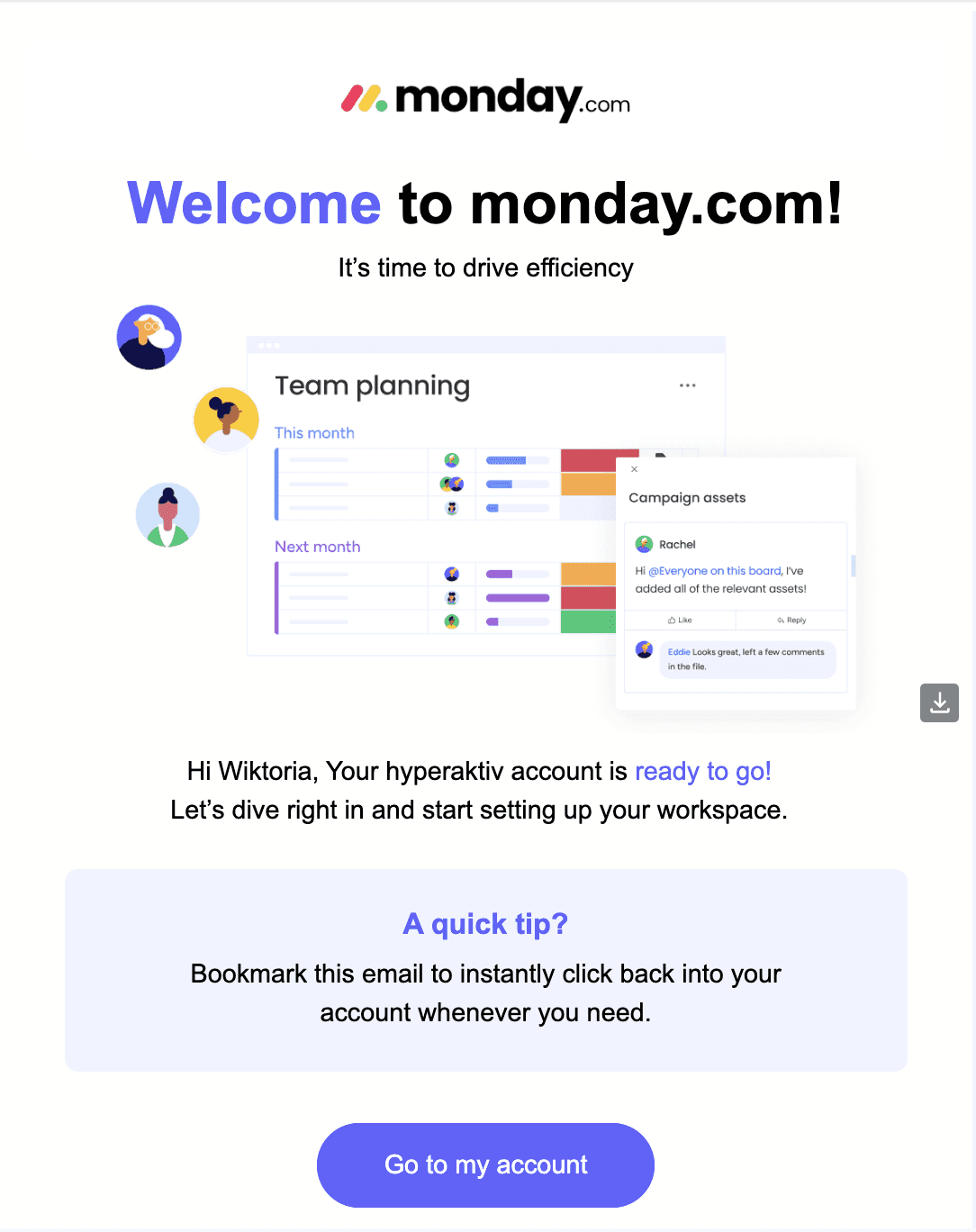
This email is the initial welcome message in monday.com's onboarding sequence. It effectively combines personalization, addressing "Wiktoria" directly, with a friendly tone to create a positive first impression. The design is clean and on-brand, featuring a preview of the platform's interface to familiarize new users with its layout and functionality.
The email's content is concise yet informative, quickly communicating the platform's value proposition of driving efficiency. It encourages immediate action with the "Let's dive right in" message and the prominent "Go to my account" call-to-action button. The inclusion of a "quick tip" to bookmark the email is a thoughtful touch that enhances user experience.
Overall, this welcome email sets the stage for user engagement by being welcoming, informative, and action-oriented, effectively initiating the user's journey with the platform.
Onboarding / Feature Education Email from Survey Monkey
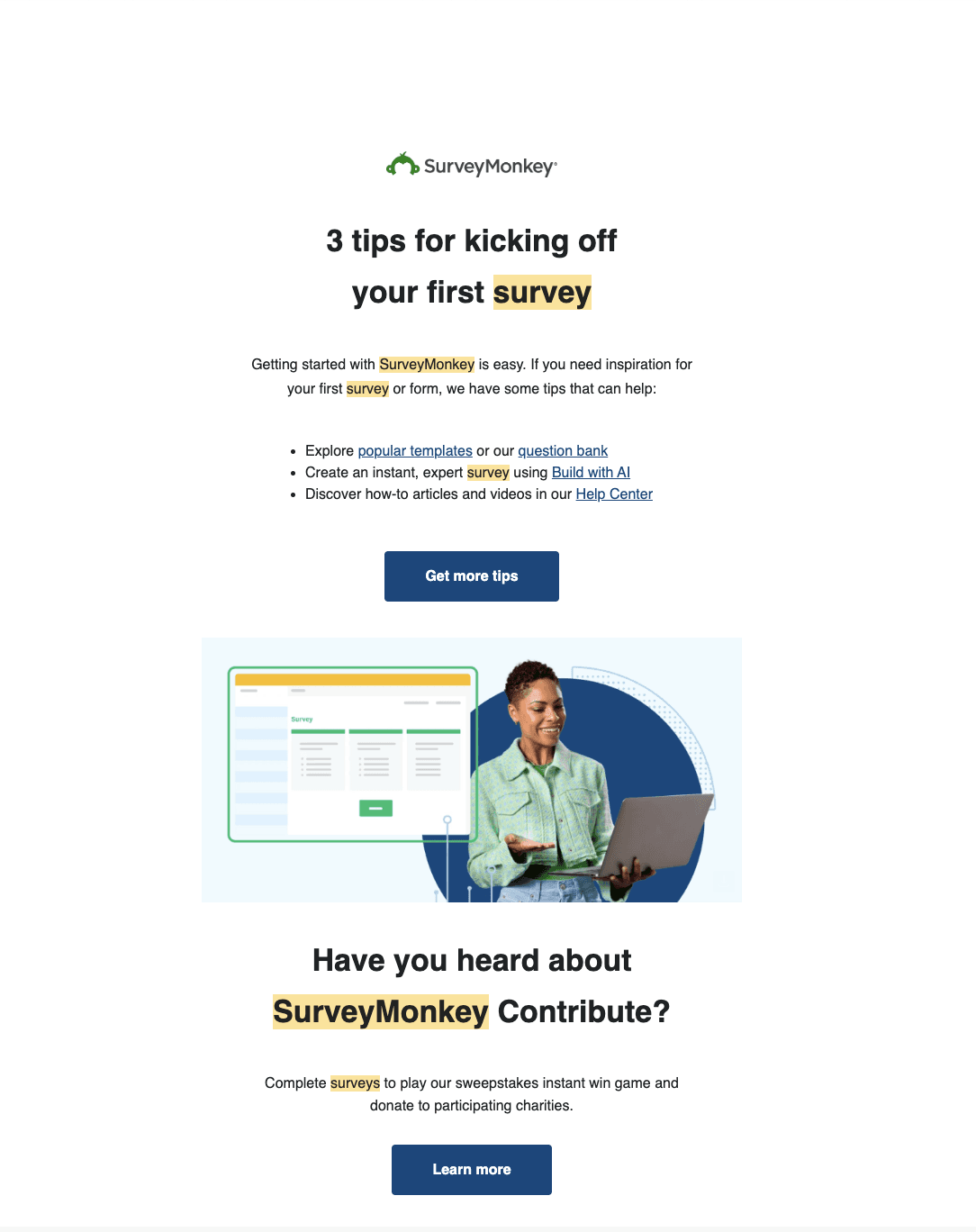
This email from SurveyMonkey is part of an onboarding sequence, focusing on educating new users about key features and encouraging initial engagement. It combines practical tips for getting started with information about additional platform features.
The email's design is clean and on-brand, using SurveyMonkey's logo and color scheme. It's structured to guide the user's attention, starting with actionable tips and moving to a product screenshot and additional feature promotion. The use of bullet points for the tips enhances readability and makes the information easily digestible.
The content strikes a balance between providing immediate value (tips for creating the first survey) and promoting extended platform use (SurveyMonkey Contribute). This approach helps new users get started quickly while also introducing them to the broader ecosystem of SurveyMonkey's offerings. The clear call-to-action buttons ("Get more tips" and "Learn more") provide clear next steps for users to deepen their engagement with the platform.
Overall, this email effectively supports user activation by offering practical guidance, showcasing the platform's interface, and introducing additional features. It sets the stage for continued platform exploration and usage, which is crucial for user retention in the early stages of the customer journey.
Re-engagement Email from Jupitrr
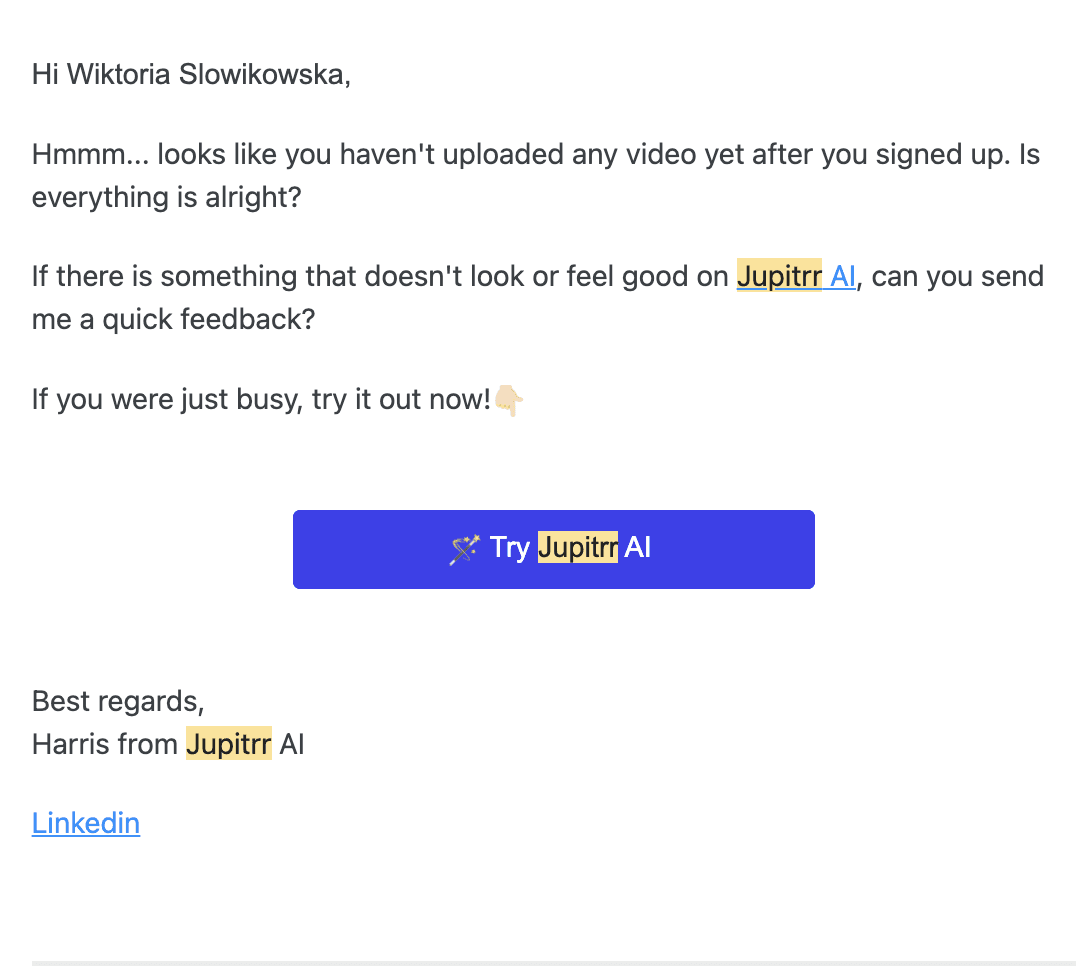
This email from Jupitrr AI is a re-engagement attempt targeting a user who signed up but hasn't yet uploaded a video. The message combines personalization, a gentle nudge, and an invitation for feedback to encourage user activation.
The email's tone is friendly and conversational, starting with a personalized greeting to Wiktoria Slowikowska. It tactfully addresses the user's inactivity without being pushy, asking if everything is alright and offering an opportunity for feedback. This approach shows concern for the user's experience and opens a channel for communication.
The content is concise and focused on a single goal: getting the user to try the platform. It provides multiple options for engagement - trying out the platform, giving feedback, or accessing their LinkedIn profile. The prominent "Try Jupitrr AI" button serves as a clear call-to-action, making it easy for the user to take the desired step.
This email effectively balances re-engagement efforts with customer care. By offering multiple ways to interact (using the product, providing feedback, or connecting on LinkedIn), it increases the chances of user response and helps Jupitrr AI understand and address potential barriers to adoption.
Conclusion
Drip email campaigns are a powerful tool for SaaS companies, enabling personalized, timely communication at scale. By implementing the strategies and best practices we've discussed, you can create drip campaigns that effectively onboard new users, increase engagement, and drive business growth.
Remember, the key to successful drip campaigns lies in providing value to your users at every touchpoint. Continuously analyze and refine your campaigns based on user behavior and feedback. With persistence and optimization, your drip emails can become a crucial driver of your SaaS success.
Now it's your turn – start planning your drip campaign strategy today and watch your user engagement soar!




